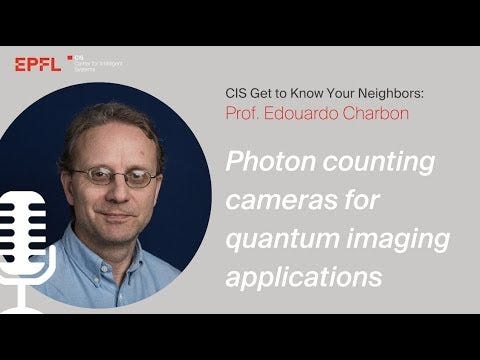
Prof. Edoardo Charbon:
Photon counting has entered the realm of image sensing with the creation of deep-submicron CMOS SPAD technology. The format of SPAD image sensors has expanded from 8×4 pixels in 2004 to the recent megapixel camera in 2019, and the applications have literally exploded in the last few years, with the introduction of proximity sensing and portable telemeters. SPAD image sensors are today in almost every smartphone and will soon be in every car. The introduction of Quanta Burst Photography has created a great opportunity for photon counting cameras, which are ideally suited for it, given its digital nature and speed; it is however computationally intensive. A solution to this problem is the use of 3D stacking, introduced for SPADs in 2015, where large silicon real estate is now available to host deep-learning processors, neural networks directly on chip, thus enabling complex processing in situ and reducing the overall power consumption. But the real opportunity is the emergence of a variety of quantum imaging modalities, including ghost imaging, quantum plenoptic vision, quantum LiDAR, to name a few. The talk will conclude with a technical and economic perspective on SPAD imagers and the vision for massively parallel solid-state photon counting in scientific and consumer applications.

Originally published at http://image-sensors-world.blogspot.com.